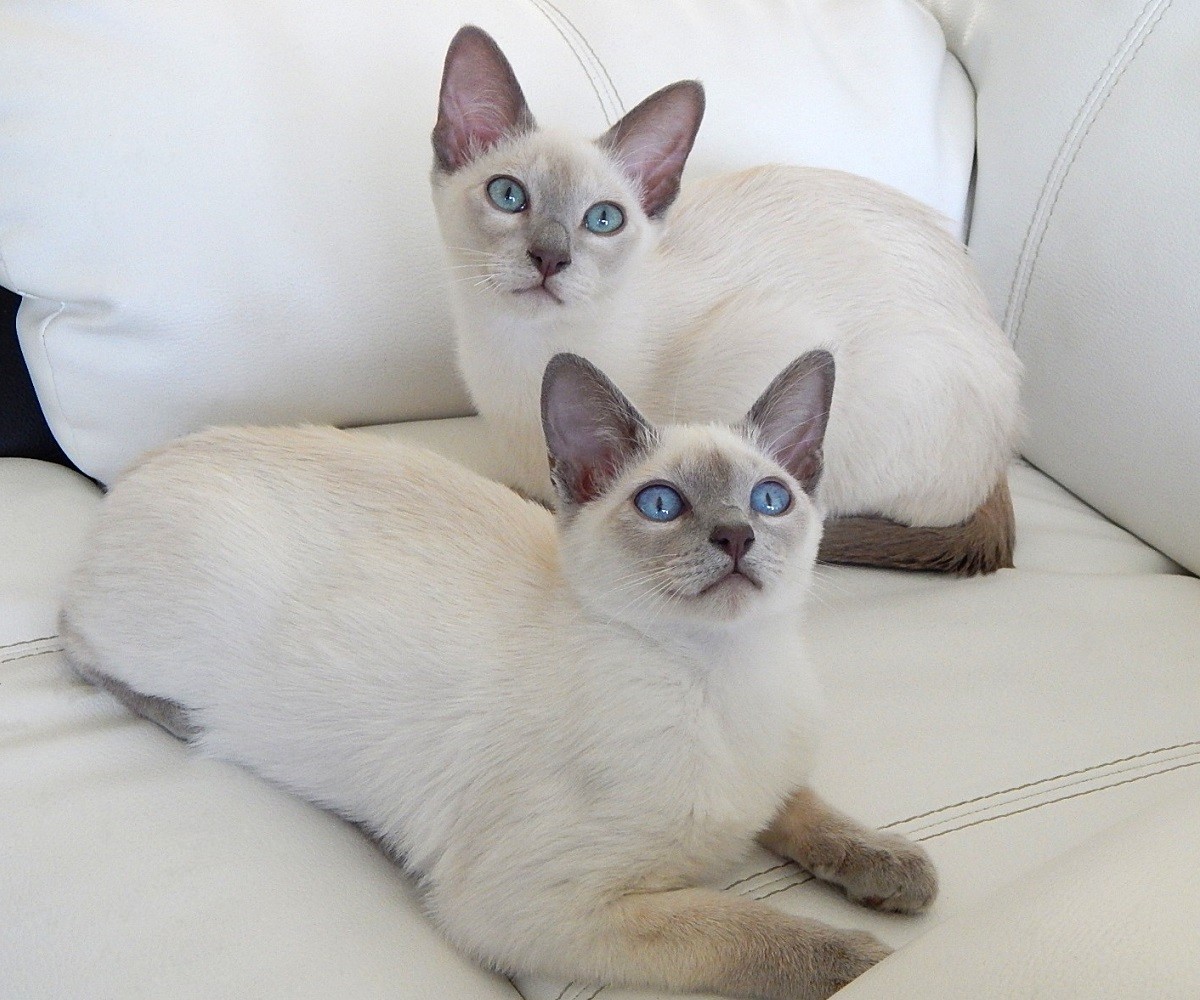The Tonkinese is the perfect example of a hybrid progressing through the ranks to become a truly recognized breed in its own right. The 1960s saw the Canadian cat fancier Margaret Conroy and her beloved Siamese and Burmese cats take center stage. Conroy loved both breeds, and so set out to create a hybrid that embodied her favorite qualities of each breed. Choosing her breeding cats carefully, she crossed a seal point Siamese with a sable Burmese. At first she called her kittens Golden Siamese, but later adopted the name Tonkinese, as suggested by other cat fanciers who wanted to avoid the notion that the Tonkinese was just another hybrid.
With the aid of other breeders, Conroy wrote a moderate and reasonable standard for her new cats and presented it to the Canadian Cat Association. This standard described a cat that was neither slinky nor stocky. Instead her cat was the perfect blend of Siamese and Burmese body type. Her standards were accepted and in 1965 the Canadian Cat Association gave the Tonkinese Championship Status. The Independent Cat Association (which no longer exists) followed suit in 1972. It wasn't long before all other American registries did the same. Today the breed is recognized by just about every registry in the world.
The Appearance of the Tonkinese
The stunning Tonkinese is the perfect blend of its parent breeds. It is neither sleek nor cobby, but something in between. Weighing in at no more than 12 pounds, this cat is medium in size with a rounded and muscular body. The head is a gentle wedge and the ears are only slightly larger than your average domestic cat. The muzzle should be blunt and fairly short.
The eyes of the Tonkinese are like little almonds in shape, but not in color. The most common eye color is a stunning turquoise or aqua, though blue and even green are also allowed. Regardless of color, the eyes should be bright and alert.
As for coat color...well, there's a little more variety. And a little more controversy. Tonkinese are available in many colors and patterns. There are pointed, solid, and mink cats, and all these patterns can be found in blue, chocolate, cinnamon, fawn, lilac, seal, and even red with tortoiseshell counterparts. Unfortunately for breeders and enthusiasts, not all registries accept all colors and patterns. So while your blue mink Tonkinese may be shown with one registry, it's considered ineligible for competition by another. If you're interested in showing your cat, consult with the registry you're interested in before you purchase your Tonkinese to make sure you're getting a kitten who will be eligible for competition.
The coat must of necessity be short and should lie flat against the body. Its silky texture is a breeze to groom, with no more than a quick weekly brushing necessary to keep your kitty looking and feeling his best.
The Personality of the Tonkinese
This cuddly breed demands to be next to you, under your feet, or in your lap. Your feline friend will want to be in the middle of everything and he'll talk to you frequently, fully expecting you to engage him in conversation. Despite this tendency to talk, he's not as vocal as his Siamese cousins. Still, he's louder than your average cat, so be prepared for chirps and meows at all hours because he doesn't know how to tell time and doesn't care that it's well after midnight.
A lover of games of all kinds, he'll play fetch for hours on end, then turn around and race around your house like a mad kitty while he waits for the next game to start. Because he's always on the lookout for new playmates, he gets along well with children and other pets as long as they'll play with him. He loves to play chase, so dogs are a favorite companion for this social breed.
If you're looking for an intelligent cat who will charm your guests and love you forever, the Tonkinese might be the cat for you.

No comments:
Post a Comment